This article seeks to make several points by looking at the evolution of my current front end: i) that achieving a reference quality front end is a journey, ii) that it is necessary to think of the components between the cartridge and the preamplifier’s input as a system rather than individually, and iii) to characterize the sound of the pieces individually and as part of the system.
I purchased an early Rockport Sirius turntable about 15 years ago, replacing a Goldmund Reference with a T3F arm. During the next five years, Andy Payor, the proprietor of Rockport, and I became friends as he made repeated treks to my house in Houston to update my table with his latest enhancements, including an air isolation base, a series of different motors and tone arms, an outboard power supply for the motor, a 50-pound stainless steel platter, new arm wiring and a variety of different belts, culminating in a custom aramid fiber belt.
Each update enhanced the ability of the table to accurately recreate the sound captured from my vinyl; none, however, inherently altered the intrinsic sound of the table. In retrospect, the basic design, such as composite materials, constrained layer damping, low noise motor with flywheel and the use of an air bearing for the platter and the tone arm, was very well thought out and effective. The basic design of the TT and arm provide a very neutral platform for the cartridge; the enhancements were exactly that, rather than band aids for design flaws.
The first enhancement was an air isolation base which did better isolate the TT from external sources of noise, lowering the noise floor, thereby increasing low-level detail and micro dynamics, particularly ambience, ultimately resulting in the impression that sounds emerged from a blacker background. The Jeff Rowland designed power supply did many of the same things but also extended bass and gave added definition to the leading edge. Unfortunately, it also introduced a certain roughness in the frequency range from 6-8k hertz, as well as other digital artifacts.
Demian Martin, an industry designer and consultant who developed the Rockport precision motor controller system, later introduced a mod in which he replaced the digital frequency synthesizer in the P/S with an analogue module that retained the good elements while eliminating the “digititis” of the original unit. The 50-pound stainless /constrained layer platter and the insertion of an improved lower noise motor moved the TT toward the imperturbability of the Goldmund Reference (one of the few areas in which the Goldmund had exceeded the Rockport) as well as further lowering the noise floor. The change out of the arm wiring from van den Hul silver to 6-9’s copper removed a touch of brightness and added body, particularly to stringed instruments and voice.
Surprisingly, two additional low cost changes also yielded significant improvements. At the suggestion of the late Bob Crump of TG Audio, I installed separate regulators for the arm’s air bearing and the platter air bearing which allowed each to be separately set. Although changes to either are very audible, adjusting the platter bearing so that there is just enough pressure to raise the platter, but not an excess of pressure, dramatically improved bass solidity and impact. The arm pressure, while somewhat less sensitive, also benefitted from fine tuning.
The belt material connecting the motor to the platter and its tensioning were also significant. The initial belt was similar to that used on the Goldmund Reference. Later belts were Mylar of different widths; aramid fiber was my final choice. The choice of belt material and tensioning impacts the transfer of energy from the motor to the platter and affects dynamics and the transfer of motor noise and speed accuracy. In general, a softer belt material with reduced tension reduces transfer of noise from the motor to the platter but plays havoc with dynamics and speed accuracy as well as IM distortion. Tighter coupling and a less elastic belt material improve speed accuracy and dynamics and lower IM distortion but transmit more motor noise.
A frequent contributor to internet talk rooms, Raul Iregas has commented at length on cartridges and tone arms with an emphasis on the need to carefully match the mass and compliance of the cartridge to the mass of the arm. The Rockport arm was originally designed around the van den hul Grasshopper cartridges and works superbly with that cartridge and other cartridges which have similar mass and compliance.
Performance is significantly compromised as one deviates from those parameters. This was brought home to me about two years ago when I switched from a Lyra Helicon to the Lyra Titan, and later the Titan i. Although I expected an improvement in sound from the Titan, I was unprepared for the magnitude of the change: startling dynamics and transients, detail and extension at the top-end, coupled with speed and superb retrieval of detail, all reminiscent of a van den hul Grasshopper but with a warmer, more fleshed out midrange and a rich harmonic structure that I do not remember from the Grasshoppers that I owned many years ago. I corresponded with Jonathan Carr afterwards about the improvement of the Titan over the Helicon. While he agreed that the Titan was the better cartridge, he was surprised with the degree of improvement which I claimed and felt that, if anything, I overstated the improvement. Perhaps he is correct, but the point that I am trying to make is that there is no substitute for the careful matching of arm and cartridge.
A few additional words on the Titan i. It has a very even top-to-bottom balance, is highly resolute and transparent and coherent top-to-bottom. Its ability to discriminate with respect to dynamic gradations particularly at the soft end of the spectrum is phenomenal. It is also no slouch at the loud end of the spectrum. Most importantly, it is an excellent match for the strengths of the Rockport. To the extent that the Titan/Rockport combination has a weakness, it is in its ability to produce low bass with force. This is more a matter of degree than omission and for me, not a serious fault.
Although the Rockport utilizes an extremely well designed low-vacuum record clamping mechanism, the sound still benefits from the use of a record clamp, particularly the Pierre Lurne which is the best clamp of the many that I have tried. The Goldmund also works well. In either case, the clamp should be used in addition to the vacuum hold down and not in place thereof. Use of the clamp primarily affects the tonal balance, adding a certain richness and weight. Note that the vacuum hold down is extremely effective in focusing images on the sound stage and reducing noise artifacts. On a separate but related note, the Rockport utilizes a stainless steel flywheel mounted on the shaft of the motor to smooth out the rotation of the motor between poles. Using a rubber O-ring around the periphery of the flywheel as a sink for any ringing makes a subtle improvement in the sound of the table.
There are two additional components to my front-end or at least that portion of the front-end dedicated to playing vinyl. A meter run of custom fabricated Nordost Valhalla cabling which connects the TT to an outboard Einstein phonostage. I tend to be very compulsive about many things which often have the effect of driving my family to distraction. I remember one year in which I owned 5 different very large speakers including the tall, very narrow full range Acoustats, IRS Beta’s, Magnepan Tympani IV’s and Crosby modified Quad 63’s with two pair of Entec subwoofers. In a similar manner, about 5 years ago, I got the bug to find the “best” TT to phono stage interconnect. Again, I tried everything that I could beg, borrow or steal.
At the time, my system was primarily composed of Nordost Valhalla cabling. After a lengthy conversation with the folks at Nordost, they suggested that I try a variant of their Valhalla cable. It differed from the normal Valhalla in that both channels were contained in a single cable. Their reasoning was that given the low signal levels, it was unnecessary to have two separate cables. As it turned out, they knew exactly what they were talking about. Once broken in (think about 700 hours of continuous use), this was the most neutral cable that I have heard. It just does not editorialize or act as a tone control. It is lightning fast with excellent transients, excels in the preservation of transient and low-level detail revealing things about the recording venue that I just fail to hear on other cables and is tonally accurate, and by that I mean it does not impose its sound on the musical event.
The Einstein The Turntable’s Choice was a late comer to my system replacing a Vendetta Research 2T that had been modified by John Curl to conform to the phono stage contained in the CTC Builders’ Blowtorch preamp. Although much could be written about the Vendetta, a picture of one of the 2″ square circuit boards would probably tell you everything that you wanted to know about the design. The boards designed by Carl Thompson were small by design to reduce stray capacitance and noise. The circuit was elegant with only a minimum of hand matched parts of the highest quality. The strengths of the unit were its ultra low noise, extreme bandwidth, phase accuracy, speed and ability to resolve extremely low-level detail. In retrospect, it did have two weaknesses, at least in comparison to tube-based phono stages: It lacked a certain degree of harmonic complexity and the ability to flesh out the body of instruments on the stage.
It was with some reservations that I auditioned the Turntable’s Choice, particularly since the unit is not physically imposing nor outrageously expensive (yes, like many other audiophools, I have a bad tendency to equate price with performance). In this instance, I could not have been more wrong. The Turntable’s Choice retained many of the characteristics that I had valued in the Vendetta and at the same time addressed the two weaknesses which I had identified. The Vendetta still has the lowest noise floor that I have encountered, has more control at the extreme bottom and is a bit more detailed. Where the Einstein pulls ahead is in two areas: 1) soundstage and 2) superior tonal balance. Make no mistake, the Curl unit does a nice job of placing instruments and singers on a wide, deep, rectangular stage; where the Einstein excels is in fleshing out the instruments and giving them three-dimensionality, which, for me, is key to the illusion that you are listening to instruments in a real space. The Einstein also has a better tonal balance, by which I mean that it captures more of the harmonic complexity of the instrument and in doing so sounds richer and more full bodied. The Einstein is also one of the more liquid solid-state pieces that I have heard.
Taken as a system (and you must consider the chain from the cartridge to the input of the preamp an integrated system), the speed accuracy, low distortion and lack of resonant signature of the Rockport taken in conjunction with the even top-to-bottom balance, resolution, transparency, dynamic discrimination and overall coherence of the Titan and harmonic complexity and slight added warmth of the Einstein, results in a very synergistic combination which yields something greater than the sum of the parts. What the combination does is draw you into the music, suspend your critical faculties and engage your emotions. You stop being obsessed with what could be better and instead focus on enjoyment of the music. For me, that is the highest praise of a system and ultimately what reproduction of music is all about — emotional involvement.





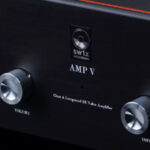
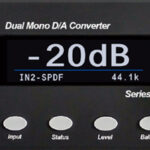

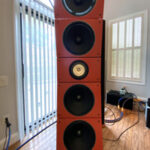
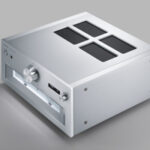
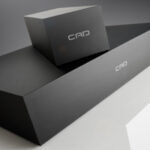

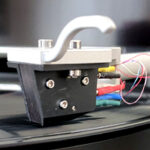



This article seeks to make several points by looking at the evolution of my current front end: i) that achieving a reference quality front end is a journey, ii) that it is necessary to think of the components between the cartridge and the preamplifier’s input as a system rather than individually, and iii) to characterize the sound of the pieces individually and as part of the system.
I purchased an early Rockport Sirius turntable about 15 years ago, replacing a Goldmund Reference with a T3F arm. During the next five years, Andy Payor, the proprietor of Rockport, and I became friends as he made repeated treks to my house in Houston to update my table with his latest enhancements, including an air isolation base, a series of different motors and tone arms, an outboard power supply for the motor, a 50-pound stainless steel platter, new arm wiring and a variety of different belts, culminating in a custom aramid fiber belt.
Each update enhanced the ability of the table to accurately recreate the sound captured from my vinyl; none, however, inherently altered the intrinsic sound of the table. In retrospect, the basic design, such as composite materials, constrained layer damping, low noise motor with flywheel and the use of an air bearing for the platter and the tone arm, was very well thought out and effective. The basic design of the TT and arm provide a very neutral platform for the cartridge; the enhancements were exactly that, rather than band aids for design flaws.
The first enhancement was an air isolation base which did better isolate the TT from external sources of noise, lowering the noise floor, thereby increasing low-level detail and micro dynamics, particularly ambience, ultimately resulting in the impression that sounds emerged from a blacker background. The Jeff Rowland designed power supply did many of the same things but also extended bass and gave added definition to the leading edge. Unfortunately, it also introduced a certain roughness in the frequency range from 6-8k hertz, as well as other digital artifacts.
Demian Martin, an industry designer and consultant who developed the Rockport precision motor controller system, later introduced a mod in which he replaced the digital frequency synthesizer in the P/S with an analogue module that retained the good elements while eliminating the “digititis” of the original unit. The 50-pound stainless /constrained layer platter and the insertion of an improved lower noise motor moved the TT toward the imperturbability of the Goldmund Reference (one of the few areas in which the Goldmund had exceeded the Rockport) as well as further lowering the noise floor. The change out of the arm wiring from van den Hul silver to 6-9’s copper removed a touch of brightness and added body, particularly to stringed instruments and voice.
Surprisingly, two additional low cost changes also yielded significant improvements. At the suggestion of the late Bob Crump of TG Audio, I installed separate regulators for the arm’s air bearing and the platter air bearing which allowed each to be separately set. Although changes to either are very audible, adjusting the platter bearing so that there is just enough pressure to raise the platter, but not an excess of pressure, dramatically improved bass solidity and impact. The arm pressure, while somewhat less sensitive, also benefitted from fine tuning.
The belt material connecting the motor to the platter and its tensioning were also significant. The initial belt was similar to that used on the Goldmund Reference. Later belts were Mylar of different widths; aramid fiber was my final choice. The choice of belt material and tensioning impacts the transfer of energy from the motor to the platter and affects dynamics and the transfer of motor noise and speed accuracy. In general, a softer belt material with reduced tension reduces transfer of noise from the motor to the platter but plays havoc with dynamics and speed accuracy as well as IM distortion. Tighter coupling and a less elastic belt material improve speed accuracy and dynamics and lower IM distortion but transmit more motor noise.
A frequent contributor to internet talk rooms, Raul Iregas has commented at length on cartridges and tone arms with an emphasis on the need to carefully match the mass and compliance of the cartridge to the mass of the arm. The Rockport arm was originally designed around the van den hul Grasshopper cartridges and works superbly with that cartridge and other cartridges which have similar mass and compliance.
Performance is significantly compromised as one deviates from those parameters. This was brought home to me about two years ago when I switched from a Lyra Helicon to the Lyra Titan, and later the Titan i. Although I expected an improvement in sound from the Titan, I was unprepared for the magnitude of the change: startling dynamics and transients, detail and extension at the top-end, coupled with speed and superb retrieval of detail, all reminiscent of a van den hul Grasshopper but with a warmer, more fleshed out midrange and a rich harmonic structure that I do not remember from the Grasshoppers that I owned many years ago. I corresponded with Jonathan Carr afterwards about the improvement of the Titan over the Helicon. While he agreed that the Titan was the better cartridge, he was surprised with the degree of improvement which I claimed and felt that, if anything, I overstated the improvement. Perhaps he is correct, but the point that I am trying to make is that there is no substitute for the careful matching of arm and cartridge.
A few additional words on the Titan i. It has a very even top-to-bottom balance, is highly resolute and transparent and coherent top-to-bottom. Its ability to discriminate with respect to dynamic gradations particularly at the soft end of the spectrum is phenomenal. It is also no slouch at the loud end of the spectrum. Most importantly, it is an excellent match for the strengths of the Rockport. To the extent that the Titan/Rockport combination has a weakness, it is in its ability to produce low bass with force. This is more a matter of degree than omission and for me, not a serious fault.
Although the Rockport utilizes an extremely well designed low-vacuum record clamping mechanism, the sound still benefits from the use of a record clamp, particularly the Pierre Lurne which is the best clamp of the many that I have tried. The Goldmund also works well. In either case, the clamp should be used in addition to the vacuum hold down and not in place thereof. Use of the clamp primarily affects the tonal balance, adding a certain richness and weight. Note that the vacuum hold down is extremely effective in focusing images on the sound stage and reducing noise artifacts. On a separate but related note, the Rockport utilizes a stainless steel flywheel mounted on the shaft of the motor to smooth out the rotation of the motor between poles. Using a rubber O-ring around the periphery of the flywheel as a sink for any ringing makes a subtle improvement in the sound of the table.
There are two additional components to my front-end or at least that portion of the front-end dedicated to playing vinyl. A meter run of custom fabricated Nordost Valhalla cabling which connects the TT to an outboard Einstein phonostage. I tend to be very compulsive about many things which often have the effect of driving my family to distraction. I remember one year in which I owned 5 different very large speakers including the tall, very narrow full range Acoustats, IRS Beta’s, Magnepan Tympani IV’s and Crosby modified Quad 63’s with two pair of Entec subwoofers. In a similar manner, about 5 years ago, I got the bug to find the “best” TT to phono stage interconnect. Again, I tried everything that I could beg, borrow or steal.
At the time, my system was primarily composed of Nordost Valhalla cabling. After a lengthy conversation with the folks at Nordost, they suggested that I try a variant of their Valhalla cable. It differed from the normal Valhalla in that both channels were contained in a single cable. Their reasoning was that given the low signal levels, it was unnecessary to have two separate cables. As it turned out, they knew exactly what they were talking about. Once broken in (think about 700 hours of continuous use), this was the most neutral cable that I have heard. It just does not editorialize or act as a tone control. It is lightning fast with excellent transients, excels in the preservation of transient and low-level detail revealing things about the recording venue that I just fail to hear on other cables and is tonally accurate, and by that I mean it does not impose its sound on the musical event.
The Einstein The Turntable’s Choice was a late comer to my system replacing a Vendetta Research 2T that had been modified by John Curl to conform to the phono stage contained in the CTC Builders’ Blowtorch preamp. Although much could be written about the Vendetta, a picture of one of the 2″ square circuit boards would probably tell you everything that you wanted to know about the design. The boards designed by Carl Thompson were small by design to reduce stray capacitance and noise. The circuit was elegant with only a minimum of hand matched parts of the highest quality. The strengths of the unit were its ultra low noise, extreme bandwidth, phase accuracy, speed and ability to resolve extremely low-level detail. In retrospect, it did have two weaknesses, at least in comparison to tube-based phono stages: It lacked a certain degree of harmonic complexity and the ability to flesh out the body of instruments on the stage.
It was with some reservations that I auditioned the Turntable’s Choice, particularly since the unit is not physically imposing nor outrageously expensive (yes, like many other audiophools, I have a bad tendency to equate price with performance). In this instance, I could not have been more wrong. The Turntable’s Choice retained many of the characteristics that I had valued in the Vendetta and at the same time addressed the two weaknesses which I had identified. The Vendetta still has the lowest noise floor that I have encountered, has more control at the extreme bottom and is a bit more detailed. Where the Einstein pulls ahead is in two areas: 1) soundstage and 2) superior tonal balance. Make no mistake, the Curl unit does a nice job of placing instruments and singers on a wide, deep, rectangular stage; where the Einstein excels is in fleshing out the instruments and giving them three-dimensionality, which, for me, is key to the illusion that you are listening to instruments in a real space. The Einstein also has a better tonal balance, by which I mean that it captures more of the harmonic complexity of the instrument and in doing so sounds richer and more full bodied. The Einstein is also one of the more liquid solid-state pieces that I have heard.
Taken as a system (and you must consider the chain from the cartridge to the input of the preamp an integrated system), the speed accuracy, low distortion and lack of resonant signature of the Rockport taken in conjunction with the even top-to-bottom balance, resolution, transparency, dynamic discrimination and overall coherence of the Titan and harmonic complexity and slight added warmth of the Einstein, results in a very synergistic combination which yields something greater than the sum of the parts. What the combination does is draw you into the music, suspend your critical faculties and engage your emotions. You stop being obsessed with what could be better and instead focus on enjoyment of the music. For me, that is the highest praise of a system and ultimately what reproduction of music is all about — emotional involvement.